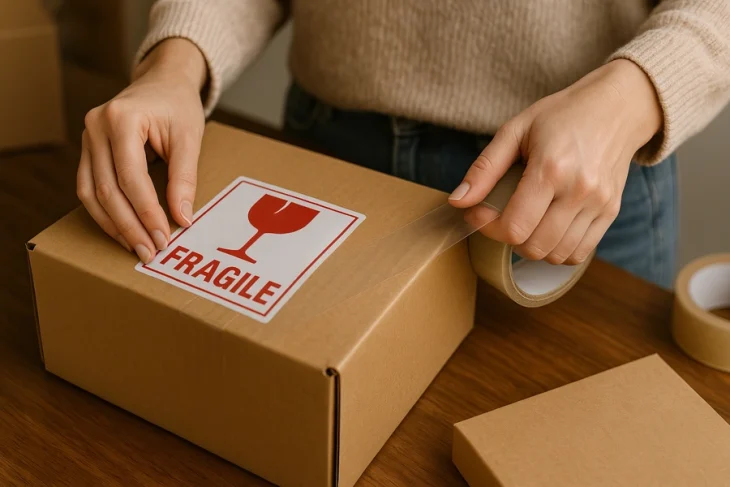
Sending a parcel might seem straightforward, but when you’re dealing with delicate items or sensitive information, selecting the right label makes a big difference. Specialist deliveries often require extra care, and using the correct labels helps ensure your package is treated properly from collection to delivery.
This is probably the most familiar label. Whether it’s a glass vase, a laptop, or ceramic parts, the “Fragile” sticker tells handlers not to throw, drop or stack the parcel like any other box.
The key is to use it when the contents are genuinely breakable. It’s not about giving your delivery special treatment just because it’s important—it’s about protecting items that could be damaged by impact or pressure. Be sure to package the item securely too. A label alone won’t save something if it’s rattling around inside a flimsy box.
If timing is critical, adding an “Urgent” label is a smart move. It signals to couriers and depot staff that your parcel should be prioritised. This is especially helpful if you’re using a same-day or next-day service and want to minimise the risk of it being held in a depot or routed incorrectly.
It’s commonly used for tasks such as legal documents with deadlines, last-minute samples, or parts required on a job site. Just be sure the rest of your service supports the urgency. A label won’t magically make an economy service move faster.
This one’s essential for items that can leak, break, or be damaged if turned on their side. Think liquids, electronics with specific internal positioning, artwork, or layered baked goods. If it matters which way is up, this label should be clearly visible on multiple sides of the box.
You can also pair it with arrows to indicate which way is up, and consider adding instructions like “this side up” for extra clarity.
Ever sent something flat only for it to arrive crumpled or rolled? That’s where “Do Not Bend” earns its keep. It’s ideal for certificates, photos, artwork, architectural plans, or any other item that requires crisp preservation and protection against creasing.
Using a rigid envelope or cardboard backing adds protection, but the label helps draw attention, so it’s not shoved through a letterbox or squashed under a stack of boxes.
For sensitive documents—such as legal papers, contracts, financial statements, or embargoed media—confidential labels indicate that the contents are private and should only be opened by the intended recipient. They’re often used in legal, media, and financial services.
This label doesn’t just help prevent prying eyes. It can also influence how the delivery is handled at each stage, reducing the risk of it being left in a shared reception or passed around an office without care.
While these labels are helpful, overusing them can reduce their impact. If everything you send is marked as ‘urgent’ or ‘fragile,’ people might start ignoring the tags altogether. Use them thoughtfully and always make sure your packaging matches the label’s promise.
Also, make sure labels are large, legible, and firmly attached. A label that is only half-peeled off or covered by tape won’t be of any use.
Choosing the correct label is just one part of getting specialist deliveries right, but it’s an easy win that can prevent many problems before they occur. A simple sticker, used effectively, helps ensure your parcel arrives in one piece, on time, and with the right level of care. And if you’re regularly sending high-value, sensitive, or delicate items, getting label use right is a habit worth building.